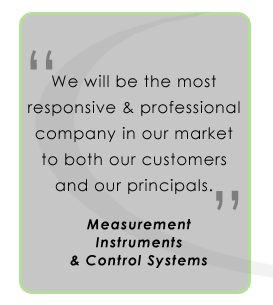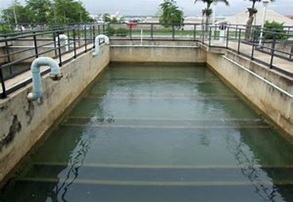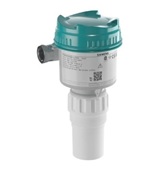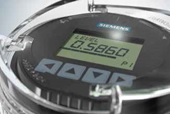|
Siemens Process Instrumentation Case Study
In this demanding environment, operators don’t have time for devices that require constant maintenance and attention—there’s enough to do in a day without tending to temperamental instruments. At each stage of operations, the plant depends on reliable and accurate level measurement.
Walking through a treatment facility, level instrumentation is at work everywhere:
In chemical storage tanks, ensuring process chemicals don’t run out or spill over the tanks that contain them
At the headworks, taking level measurements from a flume or weir to calculate volumes of effluent first entering the plant
In primary clarifiers, secondary clarifiers, sludge wells, filter beds, chemical tanks—you get the picture—controlling and monitoring levels
Most of these level measurements are usually carried out using ultrasonic level controllers and transmitters. Occasionally a plant might use radar transmitters due to the process connection limitations of a tank, chemical compatibility of the media, or if the measurement range requires it.
However, contacting level technology such as guided wave radar is seldom used—and when it is, finds itself mostly in ammonia level applications due to the aggressive nature of such media. The molecular makeup of ammonia tends to degrade some materials at a rapid pace. Luckily, some guided wave radar transmitters feature special seals that are well suited for ammonia level applications. In such applications, this technology is the right choice.
Among the level applications previously mentioned, monitoring the water level in a filter bed is quite easy—and rarely sees guided wave radar used. Most filter beds have excellent accessibility to install level instruments and their rectangular-shaped basins are usually free of obstructions that otherwise would interfere with an instrument’s signal reaching down to the lowest point.
A couple of years ago, this wastewater treatment plant underwent a nearly 20 million-gallon-per-day expansion to meet the demands of residential and commercial growth in the area that it serves. The expansion included the design of fast sand filter beds using wash water troughs and compressed air.
The large diameter wash water troughs are spaced several feet apart. However, the influent trough pipe located above and between the wash water troughs leaves only a two-foot gap in between them. This narrow gap between the large pipe and troughs prompted the use of guided wave radar level transmitters with flexible cables as the sensing elements.
As well, considering the narrow area available for level measurement in this application, guided wave radar technology seemed to be the right choice.
In the control room, the historical trend graphs showed that, for the most part, these devices tracked the level steadily during normal operation and backwash cycles. However, the graphs also showed periods of intermittent highlevel indication—some of the spikes lasting a short time and others lasting several minutes.
At the filter beds, organic material was accumulating on most of the guided wave radar transmitters’ cables. This material was not uniformly spread out along the cable and the amount of this organic buildup also varied.
Although newer versions of guided wave radar transmitters can automatically suppress buildup, filter beds in an open environment are exposed to changing weather, insects, and anything else floating on the water surface or through the air.
Once debris begins to build up on cables or rods, moisture can more easily accumulate, and buildup will continue to grow.
|




 But Guided Wave Radar in a Filter Bed?
But Guided Wave Radar in a Filter Bed?
 The Trouble with Buildup
The Trouble with Buildup
 For more information on the Siemens LU240 Ultrasonic Level Transmitter, please
For more information on the Siemens LU240 Ultrasonic Level Transmitter, please